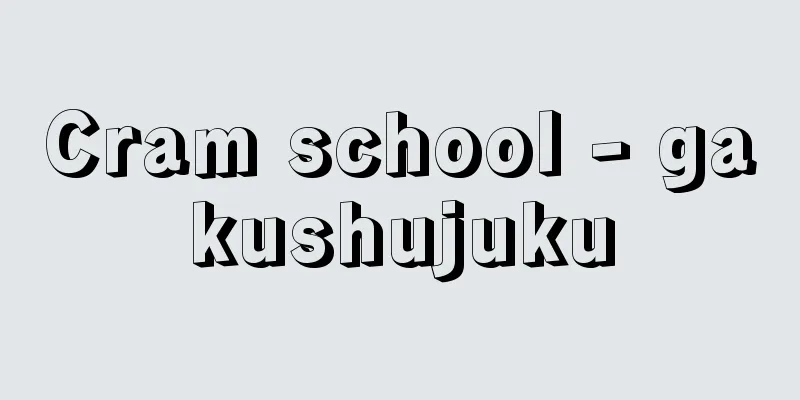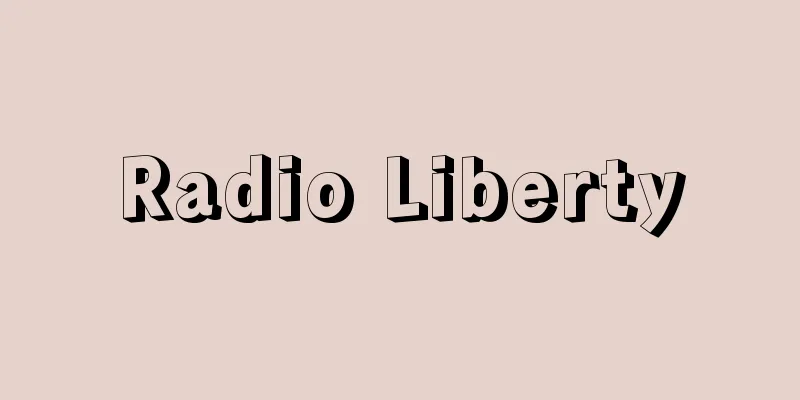Cram school - gakushujuku

|
Today, the term "cram school" generally refers to a private educational institution that is outside the public education system, such as school education and social education, and that does not require permission to be established, excluding home education. In terms of scope and type, there are cram schools aimed at students who want to go on to famous schools, cram schools that provide supplementary lessons for school education, comprehensive cram schools that combine both functions, and free-space cram schools for children and students who are not attending school. In addition, there are cram schools for skills such as abacus, calligraphy, and swimming, as well as cram schools for so-called hobbies such as piano and ballet, and even cram schools for preparing for employment exams, but these are not included in the concept of cram schools in the strict sense. As children who attend cram schools move to higher grades, these are being replaced by cram schools. As mentioned above, cram schools have the functions of strengthening school education for students to go on to higher education, supplementing it to make up for a lack of understanding of the content of school education, and acting as a substitute for education that cannot be provided by school, local, or home education. [Atsunori Yamanoi] TransitionUnder the modernization policy since the Meiji era, as the selection function of school education became evident as a route for the promotion of human resources, cram schools in Japan have played a role in strengthening or acting as a substitute for school education. For example, before the Second World War, cram schools were typical for those preparing for the entrance exams to prefectural and prefectural schools under the old system, which had strict selection criteria, and many of them were small in size. They were clearly distinguished from cram schools for those preparing for the entrance exams to old high schools, and it can be said that cram schools had a hidden presence. Cram schools began to be a social issue in the 1960s after the Second World War, and as society became more highly educated, they developed nationwide. At first, many of them were for preparing students for high school entrance exams, but eventually the age of students attending cram schools became younger, and cram schools for junior high school entrance exams and supplementary lessons for elementary school students also appeared. In the 1980s, as the competition for entrance exams became too heated, known as the "exam war" or "exam hell," cram schools began to appear for students to enter famous cram schools. Since the 1990s, cram schools have been organized into affiliated schools between central and local areas, and satellite classes have been introduced through the franchise chain (FC) system of major cram schools. It is said that cram schools have developed into a 900 billion yen education industry through market strategies such as diversification, differentiation, and division of labor in terms of the type of establishment and the content of lessons. On the other hand, however, with the decline in the 18-year-old population and the advent of a society with a declining birthrate, the competition for cram schools to secure children and students, especially those with high academic ability, and to survive is becoming even more intense. Accurate figures on the state of cram schools have gradually become clearer through nationwide surveys conducted by the Ministry of Education, Culture, Sports, Science and Technology. The largest surveys were conducted in 1976 (Showa 51), 1985, 1993 (Heisei 5), 2002, and 2008. According to the 2008 survey ("Survey Report on the Actual State of Children's Learning Activities Outside of School," Ministry of Education, Culture, Sports, Science and Technology), the national average rate of students attending cram schools was 37.8% for sixth graders and 65.2% for third graders in junior high school, a slight increase from 2002 and approaching the levels in 1993 (41.7% for sixth graders and 67.1% for third graders in junior high school). In 1976 (Showa 51), the figures were 26.6% for sixth graders and 37.4% for third graders in junior high school. [Atsunori Yamanoi] The pros and cons of cram schoolsThe state of cram schools in recent years has served as a warning to today's society that values academic credentials, while at the same time suggesting that there are problems with school education itself. Behind this lies the psychological integration of children and students into cram schools, improved learning (educational) effectiveness through careful instruction, and a change in parents' attitudes toward schools and cram schools. In response to this situation, the Ministry of Education (now the Ministry of Education, Culture, Sports, Science and Technology) held a meeting with cram school associations in June 1994, but the meeting ended with no agreement on whether the situation was "overheated" and no recognition of cram schools was given. On the other hand, however, collaboration between major cram schools (preparatory schools) and high schools and universities has progressed in areas such as classes, instructor dispatch, and entrance examination procedures. [Atsunori Yamanoi] Cooperation and issues surrounding cram schoolsFollowing the report of the Lifelong Learning Council in 1999, the Ministry of Education decided to give "conditional approval" to cram schools and to set up a forum for cram school managers, school teachers, and parents to discuss and promote three-way cooperation between cram schools, schools, and communities. The purpose is to incorporate various experiential learning into the curriculum of cram schools and promote cooperation with communities and schools. However, there are strong voices of caution in the cram school industry that "this will lead to government intervention and regulation." Originally, large cram schools were considered to be free learning institutions that were not subject to regulation by the Ministry of Education. However, in reality, in conjunction with the reform of public education, especially higher education institutions (private universities), they have deepened their cooperation with higher education institutions in areas such as learning (education) and AO entrance examinations (admission office entrance examinations, an examination system that selects students by taking into consideration aspects other than academic ability), and the nature of this cooperation is being questioned once again. Since 2000, the market for cram schools has become tougher due to a declining birthrate and an increase in combined junior and senior high school education. On the other hand, cram schools themselves are undergoing a restructuring, with efforts being made to collaborate with school education and to manage junior and senior high schools. The essence of a juku lies in the close educational bond between teacher and student, based on the student's motivation to learn, and the spiritual relationship between the two takes precedence. Given the uniqueness of traditional Japanese juku education, it is hoped that true juku will be restored to their former glory. Furthermore, these issues are also connected to the very nature of public education, from kindergarten to higher education. In light of social changes and the marketization of education, there is a need to reconstruct the educational framework for both parties. [Atsunori Yamanoi] "The Actual State of Cram School Attendance Nationwide" (1976), edited by the Ministry of Education ; "Japanese Education" (1981, Yushindo Kobunsha), edited by Shinbori Michiya ; "Cram School" (1982, Kyoritsu Shuppan), edited by Inamura Hiroshi and Ogawa Katsuyuki ; "Survey on the Actual State of Children's and Students' Extracurricular Learning Activities" (1987), edited by the Ministry of Education ; "Forces Surrounding Schools" (1988, Daiichi Hoki Shuppan), edited by Kakugai Hiroshi and Yamamoto Tsuneo ; "Results of a Nationwide Cram School Survey (Flash)" (1994), edited by the Ministry of Education [Reference items] | | | |Source: Shogakukan Encyclopedia Nipponica About Encyclopedia Nipponica Information | Legend |
|
今日、一般にいわれている学習塾とは、学校教育、社会教育といった公教育制度以外の、しかも家庭教育を除いた設置許可を前提としない私的教育機関を意味する。 範囲と類型としては、有名校への進学を目的とした進学塾、学校教育の補習などの学習塾、両者の機能をあわせもつ総合学習塾、不登校児童・生徒を対象としたフリースペース的な学習塾などがある。そのほかに、技能習熟の役割をもつそろばん、習字、水泳などのためのもの、また、いわゆるお稽古(けいこ)事にかかわるピアノ、バレエなどのためのもの、さらには就職試験準備のための塾などがあるが、狭義にはこれらは学習塾の概念には含まれない。学習塾に通う児童の高学年化とともに、これらは学習塾にとってかわられている。以上のように学習塾は、進学のための学校教育強化機能、学校教育内容の理解不足を補うための補充機能、さらには学校・地域・家庭教育で補えない教育のための代行機能をそれぞれもつ。 [山野井敦徳] 変遷日本の学習塾は、明治以降の近代化政策のもとで、人材登用のルートとして学校教育の選抜機能が顕在化するにしたがい、学校教育の強化ないしは代行機能としての役割を担ってきた。たとえば、第二次世界大戦前においては、選抜の厳しかった府立、県立の旧制中学入試のための塾が代表的で、規模にしても少人数型のものが多かった。旧制高等学校受験のための予備校とは明らかに区別され、塾は表面には出ない存在だったといえる。 学習塾が社会問題にされ始めたのは、第二次世界大戦後の1960年代以降で、学習塾は社会の高学歴化に伴い、全国的に発達を遂げた。当初は、高等学校入試準備のためのものが多かったが、やがて、塾に通う年齢も低くなり、中学校入試や小学生の補習のための塾も誕生した。1980年代には、「受験戦争」や「受験地獄」とよばれた受験競争の過熱化に伴って、有名進学塾に入るための塾も出現するという現象もみられるようになった。1990年代以降は、中央と地方の塾の系列校化や、大手学習塾のフランチャイズ・チェーン(FC)方式による衛星授業方式の導入などが展開されるようになった。設置形態や学習内容の多様化・差異化・分業化などの市場戦略によって、学習塾は9000億円の教育産業に発展したともいわれる。しかし他方では、18歳人口の減少、少子化社会の到来と相まって、学習塾の児童・生徒、とりわけ高学力児の確保と生存競争はいっそう激烈化している。 学習塾の実態に関する正確な数字も、文部科学省の全国調査によってしだいに明らかにされてきた。もっとも大規模な調査は、1976年(昭和51)、1985年、1993年(平成5)、2002年、2008年の全国調査である。2008年の調査(「子どもの学校外での学習活動に関する実態調査報告」文部科学省)によれば、全国平均の通塾率は小学6年生37.8%、中学3年生65.2%となっており、2002年時より微増し、1993年当時の水準(小学6年生41.7%、中学3年生67.1%)に近づいている。なお、1976年(昭和51)時には、小学6年生26.6%、中学3年生37.4%であった。 [山野井敦徳] 学習塾の功罪近年の学習塾のあり方は、現在の学歴社会への警告となると同時に、ある面では学校教育自体にも問題があることを示唆する結果となった。その背景には、学習塾への児童・生徒の心理的一体化と丁寧な指導による学習(教育)効果の向上、親の学校や塾に対する考え方の変化がある。文部省(現文部科学省)はこうした事態を受けて、1994年(平成6)6月に学習塾団体との会合をもったが、「過熱か否か」をめぐって平行線で終わり、学習塾の認知には至らなかった。しかし他方では、大手学習塾(予備校)と高校および大学との連携が、授業や講師派遣、入試業務などにおいて進行してきた。 [山野井敦徳] 学習塾をめぐる連携と課題文部省は1999年度の生涯学習審議会の答申を受けて、学習塾の「条件付き承認」に踏み切り、学習塾・学校・地域の三者連携を促進するため、塾経営者・学校教師・親らが協議する場の設置を決めた。その目的は、学習塾のカリキュラムに多様な体験学習などを盛り込み、地域や学校との連携を図ることにある。しかし、塾業界には「行政介入や規制につながるのでは」と警戒する声も強い。元来、大手学習塾は、文部省の規制を受けない自由な学習機関として考えられてきた。しかし、実態としてはすでに公教育とくに高等教育機関(私立大学)の改革と相まって、学習(教育)やAO入試(アドミッション・オフィス入試、学力以外の面を総合的に考慮して選抜を行う試験制度)などで高等教育機関との連携を深めてきており、改めてそのあり方が問われている。2000年以降の学習塾を取り巻く環境としては、少子化、中高一貫教育の増加によって、市場はより厳しくなってきているが、他方では、学校教育との連携や中・高等学校経営が模索されるなど、学習塾自体の再構築が進行している。 なお、塾の本質は、学習者の学習意欲を基本とする、教授する側と習う側との緊密な教育的紐帯(ちゅうたい)にあり、両者の精神的関係が優先される。このような日本の伝統的塾教育の独自性からみても、真の塾の復権が望まれる。そして、これらの問題は幼稚園から高等教育までの公教育のあり方自体とも関わっている。社会の変化と教育の市場化という事態を踏まえて、両者の教育的な枠組みの再構築が要請されている。 [山野井敦徳] 『文部省編『全国学習塾通いの実態』(1976)』▽『新堀通也編『日本の教育』(1981・有信堂高文社)』▽『稲村博・小川捷之編『塾』(1982・共立出版)』▽『文部省編『児童・生徒の学校外学習活動に関する実態調査』(1987)』▽『角替弘志・山本恒夫編『学校をとりまく勢力』(1988・第一法規出版)』▽『文部省編『全国学習塾調査結果(速報)』(1994)』 [参照項目] | | | |出典 小学館 日本大百科全書(ニッポニカ)日本大百科全書(ニッポニカ)について 情報 | 凡例 |
<<: Learning center - gakushujo
Recommend
Akimoto Shitomo - Akimoto Yukitomo
1820-1876 A daimyo in the late Edo period. Born o...
Hidden prostitute - Kakushibaijo
〘noun〙① In the Edo period, it refers to a prostitu...
The Fable of the Bees
A work (1714) by the British political satirist Be...
Peccei, A.
…It is a voluntary organization formed by intelle...
Montferrand
…Population: 140,000 (1990). Clermont, the former...
Shoes (kutsu/shoes) - shoes
Japanese footwear that covers and encases the foot...
Kaunitz, WA - Kaunitz
...From a world historical perspective, it was pa...
Chemoreceptors - science professor
A receptor that is differentiated within an anima...
Greek Orthodox Church
Along with the Russian Orthodox Church, it is the...
Baijiu (English name) (China)
A Chinese alcoholic beverage, a general term for ...
Nishikawa Sukenobu
An ukiyo-e artist from Kyoto in the mid-Edo perio...
Moskovskii khudozhestvennyi akademicheskii teatr (English notation)
…Russian theater. Its official name is the Moscow...
conventional deterrence
…Deterrence strategies include not only deterring...
Bigeye tuna (English spelling)
A marine fish of the Scombridae family in the Perc...
"The Last Testament of King Zhongqi of Haining"
…He was given the posthumous title of Zhong Ke by...









